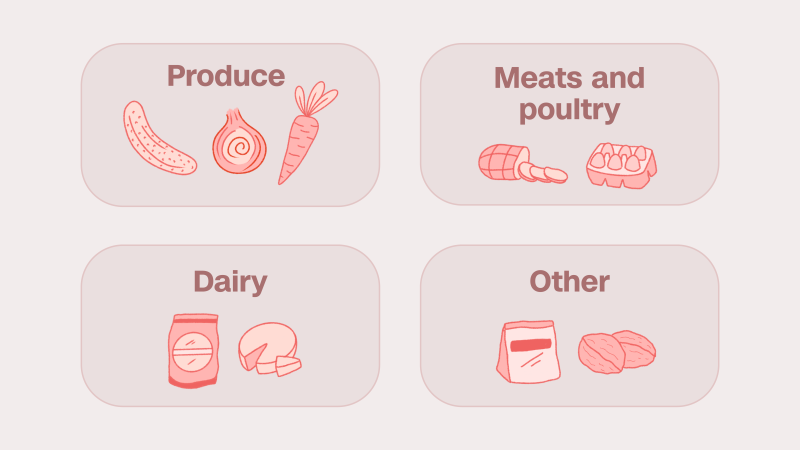Contaminated food remains a leading cause of illness in the United States, posing significant risks to public health as severe cases involving hospitalization and even fatalities are increasingly reported. Recent findings reveal that approximately 300 food recalls occurred in 2024, linked to nearly 1,400 reported illnesses. According to a report by the Public Interest Research Group (PIRG), a nonprofit organization focused on consumer advocacy, 487 individuals were hospitalized due to foodborne illnesses, while 19 fatalities were reported. Alarmingly, these figures represent a doubling of both hospitalizations and deaths compared to the previous year, 2023.
Despite the spike in illness severity, the total number of food recalls across the U.S. Food and Drug Administration (FDA) and the U.S. Department of Agriculture (USDA) in 2024 saw a slight decrease from the previous year. Specifically, while FDA-related recalls increased by 8%, USDA recalls underwent a significant decline of 38%. The FDA oversees more than three-quarters of the food supply, which underscores the importance of these statistics.
It’s crucial to understand that the mere number of recalls is not a definitive indicator of the overall safety of the food supply. Teresa Murray, director of the consumer advocacy program with PIRG, emphasizes this point, suggesting that increased recall numbers could reflect improved testing and monitoring protocols by state and federal authorities. Furthermore, many recalls successfully avert potential illness by addressing safety concerns before consumers become affected.
While recalls may not directly correlate with food safety in most years, the significant increase in hospitalizations and deaths certainly raises concerns about the level of contamination in the food supply during 2024. Murray notes that approximately 13 major outbreaks were responsible for nearly all of the reported illnesses last year, and many of these outbreaks involved widely recognized brands.
For example, E. coli contamination in onions used in McDonald’s Quarter Pounder sandwiches resulted in 104 illnesses, leading to 34 hospitalizations and one associated death. Similarly, Listeria contamination found in Boar’s Head deli meats led to 61 reported illnesses, with a staggering 60 hospitalizations and 10 deaths. Notably, contaminated meat and eggs accounted for over a quarter of all food-related hospitalizations, whereas produce items emerged as the primary source of concerns; cucumbers alone were responsible for over a third of hospitalizations, chiefly attributed to a Salmonella outbreak.
Murray highlights that the most significant issues often arise from raw foods rather than cooked items, as proper cooking typically eliminates harmful bacteria. In 2024, there was an alarming increase in recalls due to Salmonella, Listeria, and E. coli, with these three pathogens contributing to more than a third of all recalls. Interestingly, a substantial portion of recalls, approximately one-third, related to undeclared allergens. This category of recalls remains a primary concern but shows improvement compared to 2023, when undeclared allergens constituted nearly half of all recalls. Researchers attribute this progress, at least in part, to heightened awareness around allergens, especially relating to sesame, which now requires clear labeling.
Legislative efforts have historically aimed to bolster food safety; for instance, the Food Safety Modernization Act, enacted in 2011, introduced several regulations aimed at ensuring safer food practices. However, the implementation of these regulations has been gradual, with some rules still being finalized. The Produce Safety rule, which addresses contamination issues similar to those seen with contaminated onions, was not established until 2016.
Technological advancements have also played a vital role in improving the detection of foodborne outbreaks. Dr. Donald Schaffner, a food safety expert, noted that the Centers for Disease Control and Prevention (CDC) has made strides in tracing outbreaks more effectively, aided by developments in whole genome sequencing. These advancements enable better data linking across multiple states, providing greater insight into the origins of foodborne illnesses.
Looking toward the future, concerns persist about the direction of the U.S. food safety strategy, particularly with Robert F. Kennedy Jr. potentially overseeing the FDA as the secretary of the U.S. Department of Health and Human Services. His commitment to reforming the food system and addressing corporate influences may significantly impact public health policies. Moreover, an executive order from President Trump announced the establishment of the Make America Healthy Again Commission, extending its focus diligently toward food safety alongside initiatives aimed at chronic disease reduction.
Ultimately, the accountability for food safety does not rest solely on regulatory bodies; it’s a shared responsibility among manufacturers, processors, and government bodies. Murray asserts that food safety should be prioritized at the manufacturing stage to minimize the need for recalls. Consumers can actively contribute to their safety by maintaining proper food handling practices, including keeping food at appropriate temperatures, washing hands and utensils frequently, and staying informed about recalls through grocery store notifications or food safety apps. In conclusion, sustaining a safe food supply demands continuous efforts from all parties involved, from regulators to consumers.












